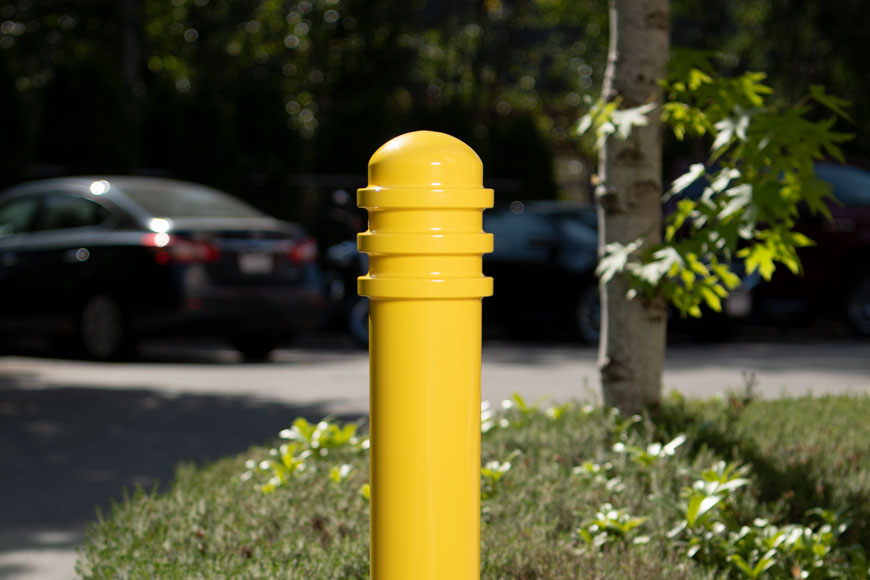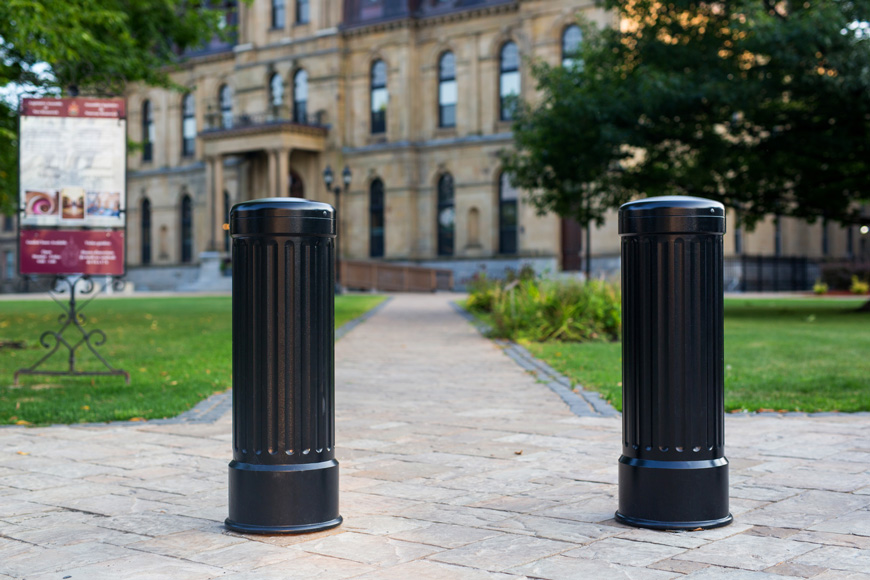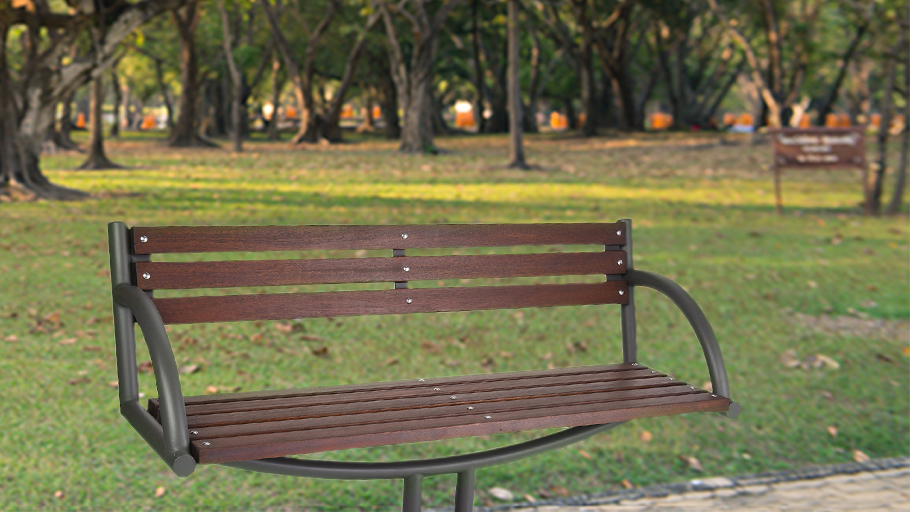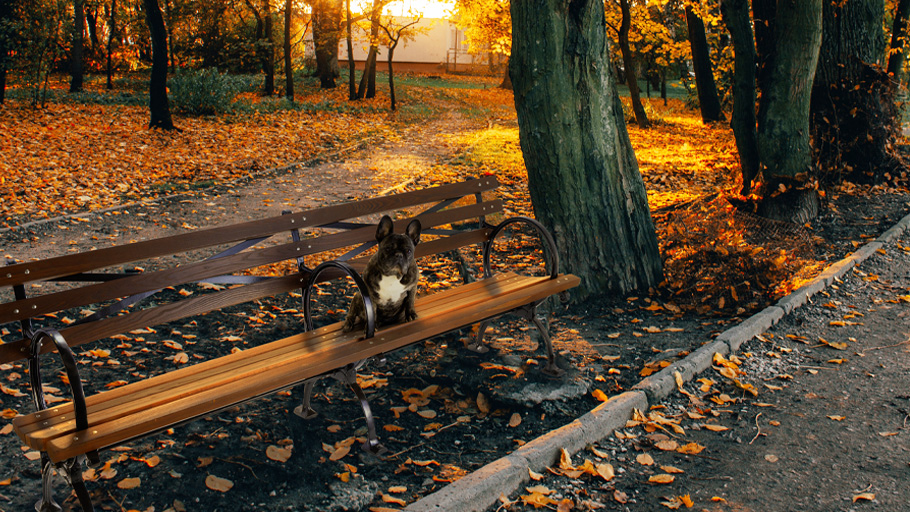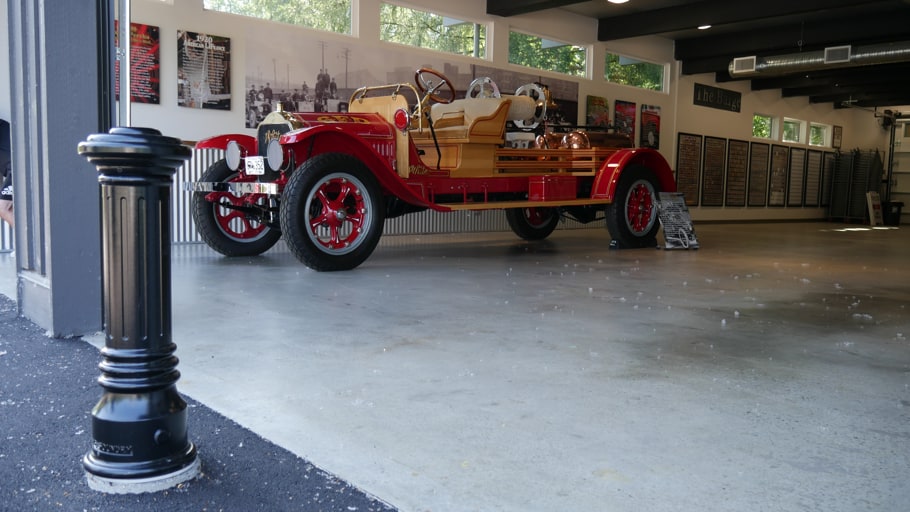Comparing ease, security, and accessibility for facilities and their clients.
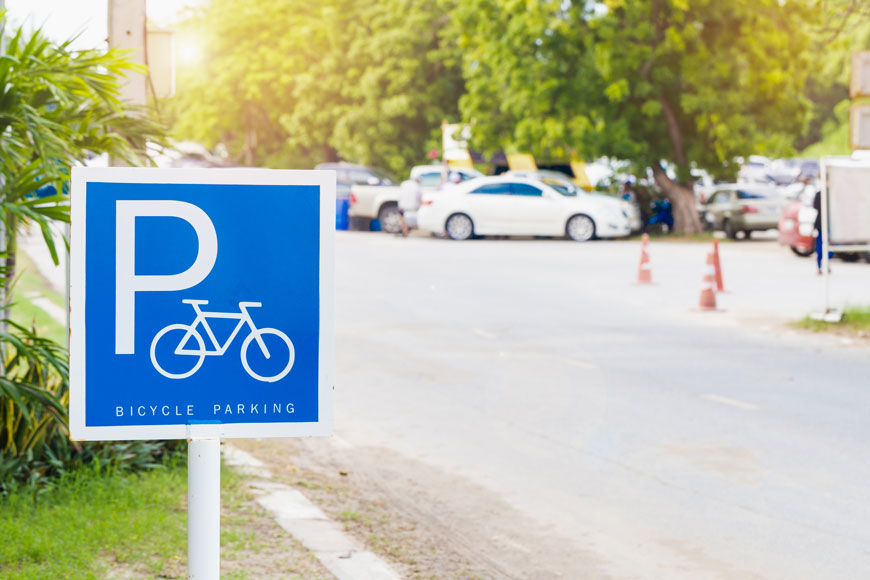
As the cycling industry grows, the range of cycling accessories and complementary infrastructure grows too. Modern cyclists demand more than just transport from point A to point B—we want to arrive safe, park quickly, and return to find our bike in the same condition we left it.
Daily commuters, hobbyists, and hardcore gear-heads alike all have one thing in common: investment in a valuable means of transportation. Theft and vandalism can leave riders stranded.
Bike parking isn’t just a polite nod to ‘green’ initiatives anymore—it is a necessity to any business or institution hoping to attract and retain top talent or loyal customers.
The question you need to ask isn’t so much “do I need bike parking,” as “what kind?” There are a lot of options out there, from galvanized steel to stainless, artistic to austere. In general, the two broad categories of parking are bike racks and bike lockers.
These two varieties meet different needs. The best way to decide which is most suitable to your location is to evaluate the space you have available, who will be parking there, and for how long.
Are Bike Lockers Safer than Racks?
Lockers and racks are both secure bike parking installations. Bike racks come in a range of shapes and sizes, including single installations, mass parking models, circles, waves, or spirals. There is great variety in design, but the essential elements remain the same: a bar creates a stationary closed loop that serves as an anchor point for a bike lock. The security of bike racks depends on three major factors:
- The quality of the bike rack
- The type and quality of the lock
- How the lock is used
A weakness of any one of these factors compromises security. Bike racks can be a very effective security tool if used properly, or a very weak one if used improperly. Once a solid bike rack is in place, the relative security value of a bike rack is in the hands of the cyclists who use it.
In contrast, lockers are fully enclosed. Most models feature a solid door-locking mechanism secured by a single padlock. There are fewer factors effecting locker security:
- The quality of the bike locker
- The quality of the lock
Bike lockers can only be locked in one way, so there is less variation, and ultimately less opportunity for error, when they are secured.
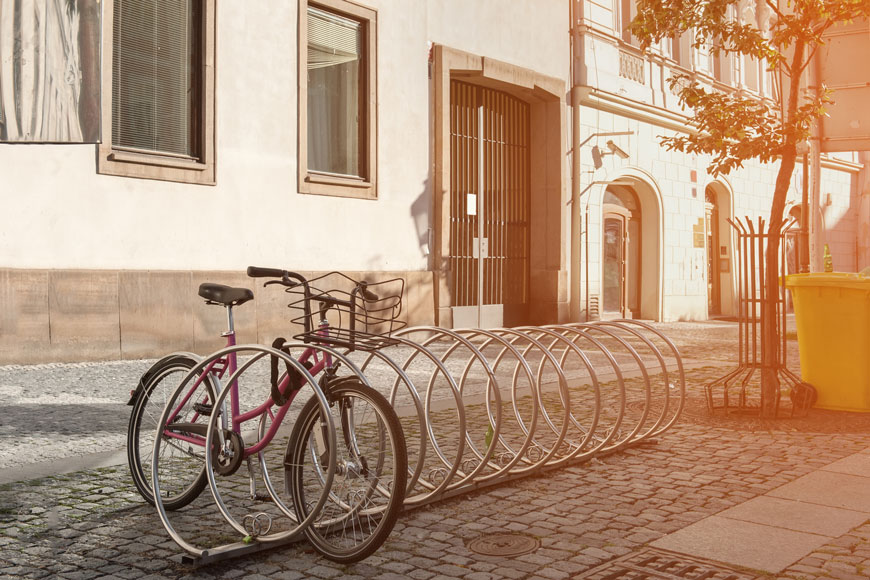
Bike Parking Dimensions
A big factor in choosing bike lockers vs. bike racks is the space available. Bike racks come in a wide range of sizes, from the super compact to large multi-bike feature pieces. Bike lockers have a more consistent size—approximately 6 feet (1.8 meters) from end-to-end.
If you need to fit many bikes in a very restricted space (under 6 x 3 ft.), your answer is easy: you need a bike rack. Even if the advantages of bike lockers are desirable for your location, a high-capacity locker corral needs adequate space to function.
This isn’t to say that lockers can’t work in a compact area. Lockers can be configured in a straight line, circle, or curve around a 90-degree corner. They can also be installed easily on grass or gravel, an advantage not shared by most bike racks (secure bike racks should always be embedded in or bolted down on concrete).
Bike racks are a bit more versatile. The smallest models take less than a square foot when unused. They can be installed as a standalone feature, or in a series. Larger models are also widely available.
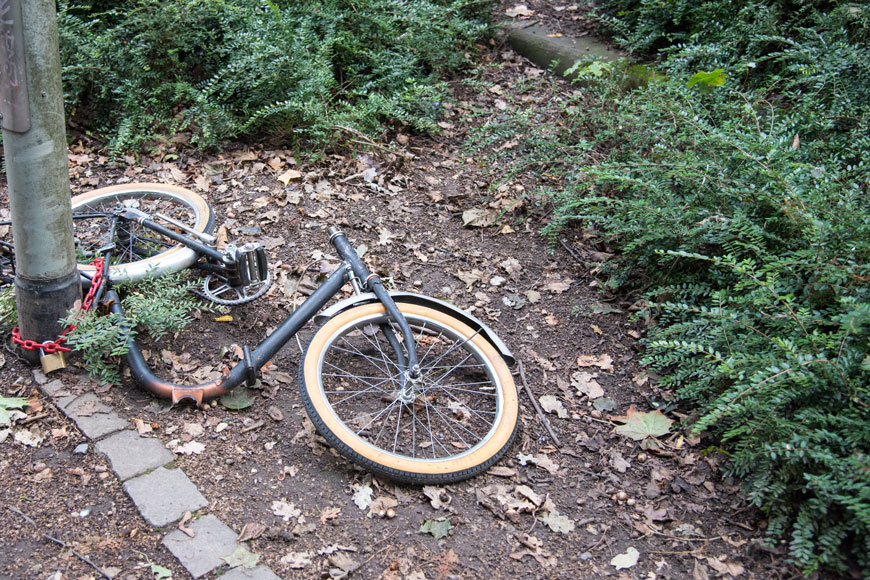
Outdoor Bike Parking and Security
After space, the next most important consideration is risk. The point of a bike parking installation is to provide a safe place for employees, customers, or the public to store their bikes. If the parking provided is not secure enough to mitigate the risk of theft, it’s a failure—no one will use it. At the same time, more secure parking tends to be more expensive. You don’t want to go overboard when the risk is low.
Use this guide to estimate the risk for your location.
HIGH RISK
- Long term parking
- Isolated
- High local theft rate
- Close to a transit center
LOW RISK
- Short term parking
- Open and visible
- Low local theft rate
- Far from a transit center
Bike lockers are more secure than bike racks because they are fully enclosed. Not only are the bikes inside much less likely to be stolen, but they are also protected from the damage causes by failed theft attempts.
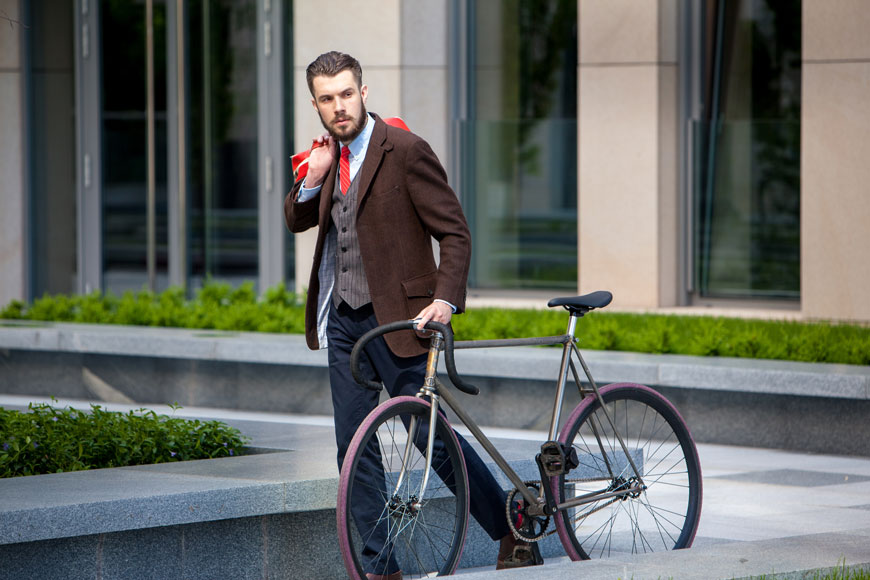
Who is this bike parking for?
The final consideration is who will be using the bike parking, and what type of experience you want to provide. Is the installation meant to help retain talented employees? Persuade bicycle tourists to stay and spend? These demographics have high expectations; they will appreciate the added security and convenience of bike lockers.
The full enclosure provided by bike lockers allows cyclists to leave their accessories and panniers (parts that would be very vulnerable on a bike rack) in place without worrying.
Bike lockers also protect bikes from the elements, keeping them comfortable and dry in any weather. That kind of protection is essential for long term storage; without it, bikes will suffer from rust and other weathering.
Still not sure what type of bike parking you need? Bike racks or bike lockers? Compare the options here.




